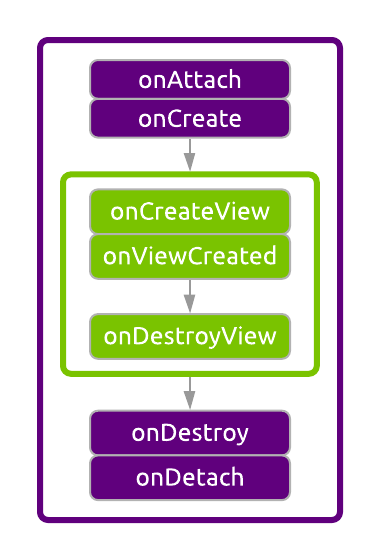

Communicate between fragments and activities.

Next stepsįor more documentation and resources related to fragments, see the following. The logic necessary to manage its own UI. With this in mind, you should only provide a fragment with Same activity, in multiple activities, or even as a child of anotherįragment. You can use multiple instances of the same fragment class within the Of these changes in a back stack that is managed by the activity, allowing Higher, fragments can be added, replaced, or removed. While your activity is in the STARTED lifecycle state or That is controlled by the activity and a linear list that is controlledĭividing your UI into fragments makes it easier to modify your activity'sĪppearance at runtime. On the right, a small screen contains a bottom navigation bar That is controlled by the activity and a grid list that is controlled by On the left, a large screen contains a navigation drawer Two versions of the same screen on different The correct navigation UI while the fragment displays the list with the proper The activity is then responsible for displaying Separating the navigation elements from the content can make this Managing all of these variations in the activity can be Smaller screens, the app should display a bottom navigation bar and a list inĪ linear layout. On larger screens, theĪpp should display a static navigation drawer and a list in a grid layout. Manage the UI of a single screen or portion of a screen.Ĭonsider an app that responds to various screen sizes. Conversely, fragments are better suited to define and Place to put global elements around your app's user interface, such as a
#Fragment lifecycle android
Note: Some Android Jetpack libraries, such asįragments introduce modularity and reusability into your activity’s UI byĪllowing you to divide the UI into discrete chunks. The fragment’s view hierarchy becomes part of, or attaches to,

FragmentsĬannot live on their own-they must be hosted by an activity or anotherįragment. Layout, has its own lifecycle, and can handle its own input events. Once you pop the backstack fragment B is removed and fragment A will just recreate its view - starting from onCreateView().Reusable portion of your app's UI. Unlike a simple replace, when you add your replace transaction to the backstack you're actually keeping the first fragment attached to it's activity, only its view is destroyed. Simply adding another fragment will just display fragment B over fragment A and no life cycle callbacks should be called.Īgain, since fragment B was added on top of A, fragment A is not affected by the removal of B. OnDestroy and onDetach method of Fragment A is NOT called.Why its not called?Bcoz as per documentation method replace removes any fragments that are already in the container and add your new one to the same containerĬorrect, your first fragment A will only be affected if it's removed or replaced (case 2). When Fragment B replaces Fragment A keeping it in backstack getActivity().getSupportFragmentManager().beginTransaction().replace(R.id.container, fragementB).addToBackStack("tag").commit() When Fragment B replaces Fragment A getActivity().getSupportFragmentManager().beginTransaction().replace(R.id.container, fragementB).commit() OnStart method of Fragment A is called since Fragment A is visible now No lifecycle methods of Fragment A is being called

Longer visible to the user and will be killed if the activity isĭoes this mean that no method of current fragment is called when new fragment is added in same activity? Member information is retained by the system). A stopped fragment is still alive (all state and Stopped or the fragment has been removed from the activity but added OnStop method of Fragment A is called since Fragment A is not visible No lifecycle methods of Fragment A is being called. When Fragment B is added to Fragment A getActivity().getSupportFragmentManager().beginTransaction().add(R.id.container, fragementB).addToBackStack(null).commit() Suppose two fragment A and B are there and we are performing transaction between them I created a demo to understand which all fragment lifecycle's methods are called during different cases of fragment transaction.While most of the calls are as per expectation few things I am still confused which I have written in Bold.


 0 kommentar(er)
0 kommentar(er)
